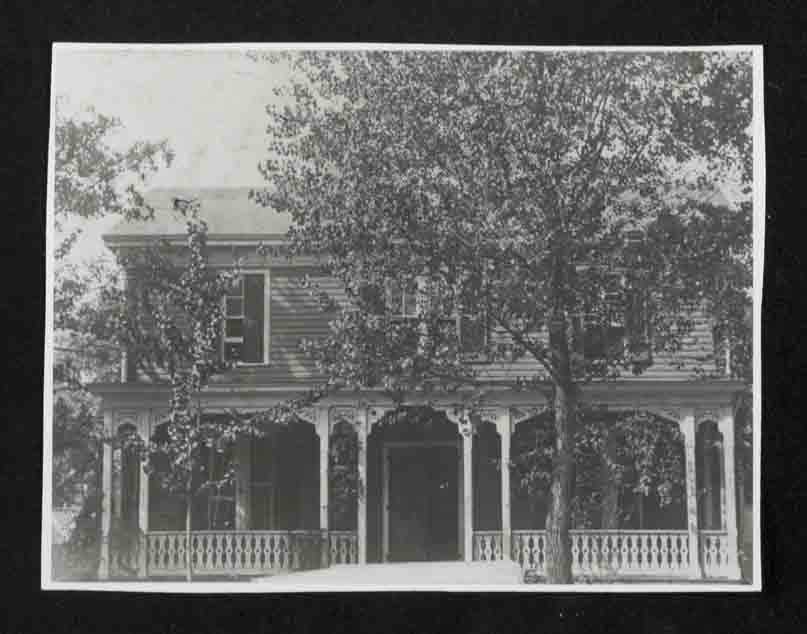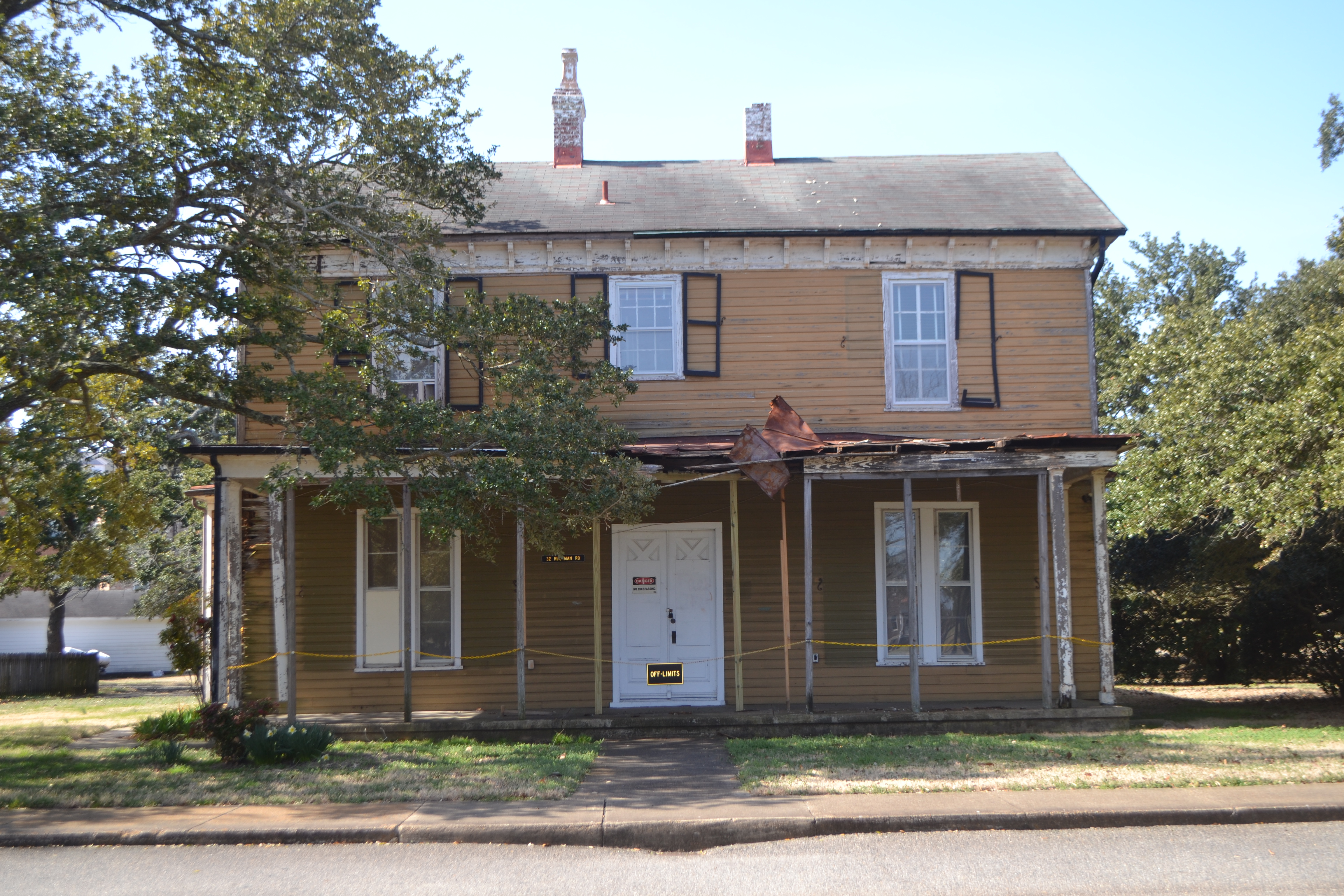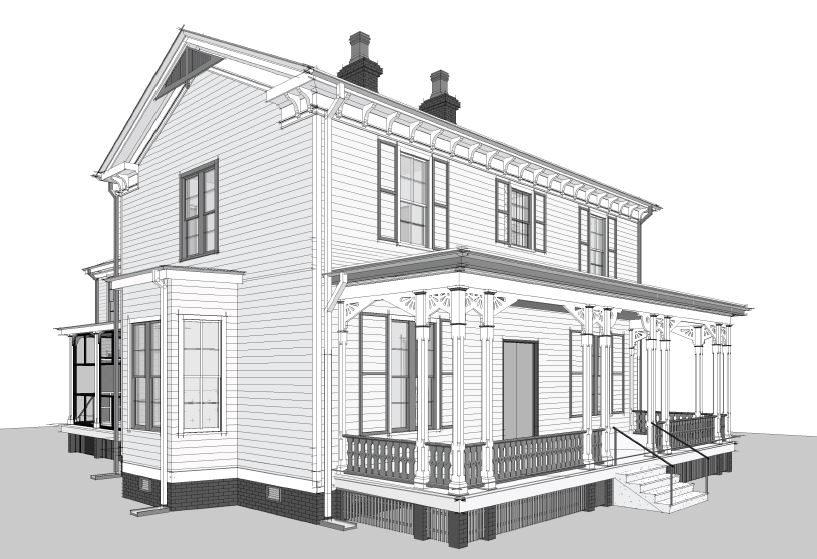Funds from one of the largest grants ever received by the Fort Monroe Authority will be used to rehabilitate 142-year-old building
FORT MONROE, VA / ACCESSWIRE / October 17, 2022 / The Fort Monroe Authority is pleased to announce that it has received a sizable grant from the National Park Service (NPS), which will be used for the preservation of one of Fort Monroe's oldest buildings.
The $372,437 grant - one of the largest grants ever awarded to the Fort Monroe Authority- is part of NPS'Save America's Treasures grant program, which recently announced $24.25 million in funding for 80 projects in 32 states and the District of Columbia.

The funds will be used for the rehabilitation of the Building 14 Officer's Quarters, which is a contributing element to the Fort Monroe National Historic Landmark. Located at 14 Ruckman Road within the boundaries of the historic stone fort and facing northeast towards the Parade Ground, Building 14 was constructed in 1880 for the cost of$5,500. Over the course of the structure's 142-year history, Building 14 has housed 45 U.S. Army Officers and their families. One of the most notable residents was Major General Ivan L. Bennett, who resided in Building 14 from 1930-1933 and eventually served as chief chaplain of U.S. Army Forces in the Pacific during World War II and later rose to the position of Chief of Army Chaplains serving from 1952-1954.
Working in collaboration with David Stroud, Director of Heritage Assets and Historic Preservation Officer for the Fort Monroe Authority, the rehabilitation project's design was developed with the assistance of an accomplished team of architects from Hanbury of Norfolk, Va. The project is scheduled to begin in the spring of 2023 and will be a comprehensive rehabilitation that will include repairs to the structure's foundation, roof, chimney, windows and doors, siding, and interior finishes. The project will also address numerous mechanical, electrical, and plumbing improvements that seek to offer the structure improved resiliency while maintaining character-defining features. The rehabilitation plan also includes elevating the structure per the NPS Guidelines on Flood Adaptation for Rehabilitating Historic Buildings to a height of 16 inches. In doing so, it is believed that the structure will be better positioned and protected from future potential flooding episodes during coastal storm events as well as to provide needed access to the crawl space for preservation maintenance activities.

The rehabilitation project is expected to take approximately 12-18 months to complete once a qualified contractor is selected for the rehabilitation.
"The goal for the rehabilitation of Building 14 is to return the structure to the original intent of the builder while providing for sensitively applied modern amenities and resiliency for future residential occupancy," said Stroud. "As with all preservation projects here at Fort Monroe, we will employ painstaking efforts to ensure that this historic structure and its extant historic elements are maintained, restored, or replicated based upon primary or secondary source research."
"The rehabilitation of Building 14 is an integral part of our mission to preserve Fort Monroe for future generations," said Glenn Oder, Executive Director of the Fort Monroe Authority. "Preserving the historic buildings allows us to tell the full history of this property in a setting that includes structures that have been standing for over a hundred years or more."
Save America's Treasures, which is funded through the Historic Preservation Fund (HPF), has provided $356 million to more than 1,326 projects between 1999 and 2020. Requiring a dollar-for-dollar private match, these grants have leveraged more than $500 million in private investment and contributed more than 16,000 jobs to local and state economies.
"Through private and public investments, the Save America's Treasures program supports community-based preservation and conservation work on some of our nation's most important collections, artifacts, structures, and sites for the benefit of future generations," said NPS Director Chuck Sams.

About Fort Monroe
The Fort Monroe Authority (FMA) is a political subdivision of the Commonwealth of Virginia, created to protect the historic resources at Fort Monroe, provide public access to the Fort's historic resources and recreational opportunities, exercise exemplary stewardship of the Fort's natural resources, and maintain Fort Monroe in perpetuity as a place that is a desirable one in which to reside, do business, and visit, all in a way that is economically sustainable, after the federal Base Realignment and Closure Commission (BRAC) closure in September2011. Fort Monroe has received several national and international designations to recognize and protect the area's important heritage. In 1960, Fort Monroe was designated a National Historic Landmark and in 1966, Fort Monroe was listed on the NationalRegister of Historic Places. In 2011, President Barack Obama signed a proclamation designating Fort Monroe a national monument. Learn more at fortmonroe.org
About National Park Service
More than 20,000 National Park Service employees care for America's 423 national parks and work with communities across the nation to help preserve local history and create close-to-home recreational opportunities. Learn more at nps.gov, and on Facebook, Instagram, Twitter, and YouTube.
Media Contact:
Phyllis Terrell
Director of Communications
Fort Monroe Authority
757-903-6532
[email protected]
SOURCE: Fort Monroe Authority




